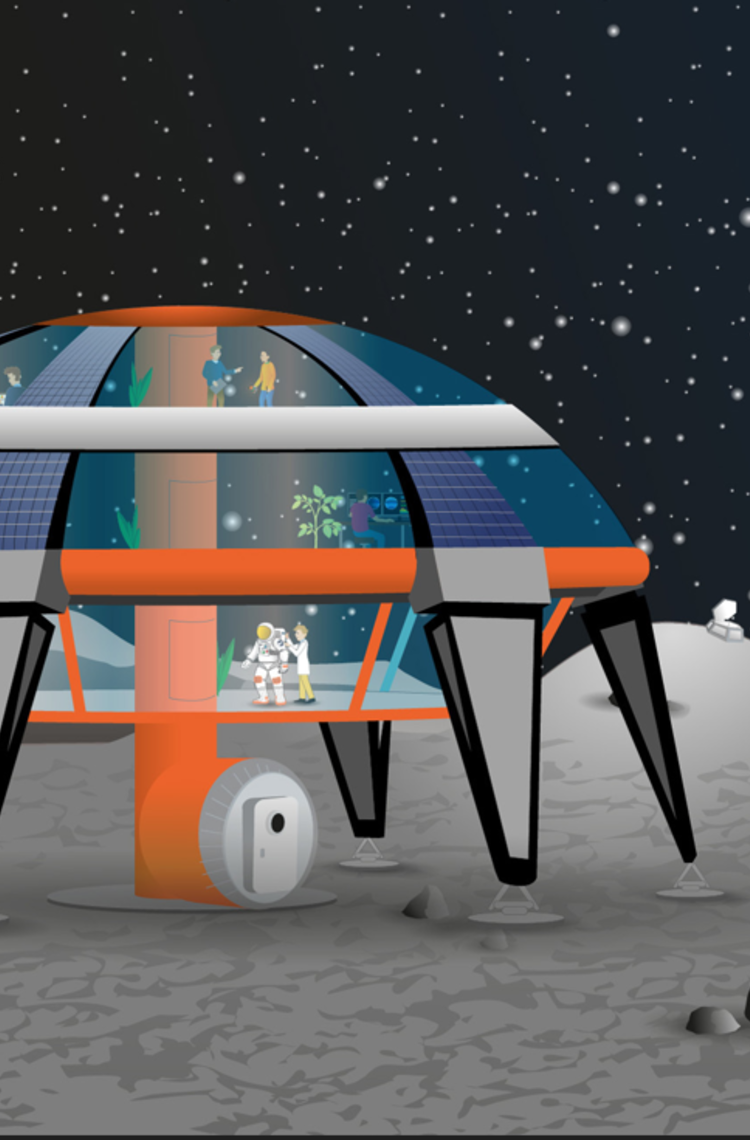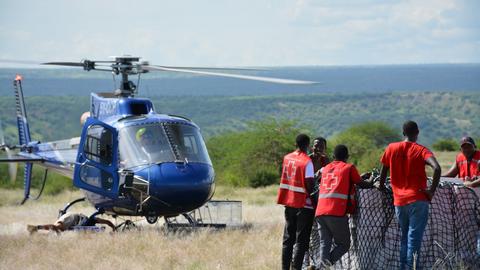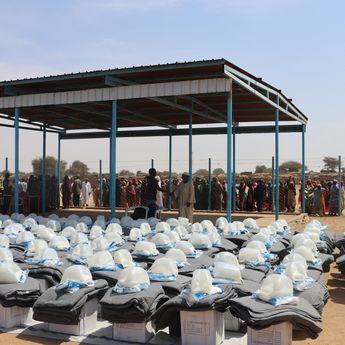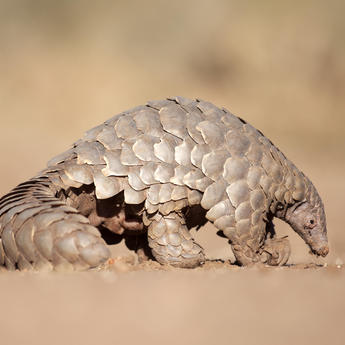From a base built by rovers and astronauts using in-situ resources at the lunar south pole to a north pole facility with surface and subsurface living/working areas, the 2021-2022 Moon Camp Challenge’s winning projects once again highlighted students’ ability to envision the future of space exploration.
This fourth edition of the Moon Camp Challenge involved a record participation of 5,649 pupils from 53 countries worldwide, who were tasked with imagining future sustainable lunar settlements with the help of 3D-modelling tools.
Working in teams, the participants were first required to understand how astronauts could live on the Moon. The next step was to design a Moon camp adapted to the environment, taking into account the use of local resources and providing protected living and working facilities for the astronauts.
A partnership of the Airbus Foundation, European Space Agency and Autodesk
The challenge was organised by the Airbus Foundation and the European Space Agency (ESA) in coordination with software company Autodesk, with a jury of experts from these three partners selecting the winning teams. Participants benefited from access to Airbus Foundation Discovery Space content and ESA educational resources.
“I am impressed by the winners’ work and how it has been brought to life in 3D,” said Julie Kitcher, Airbus’ Executive Vice President – Communication & Corporate Affairs, and Chair of the Airbus Foundation’s Board of Directors.
My congratulations to all participants in this latest Moon Camp Challenge, I am encouraged to see that 40% of the participants were girls. Our participation in the Challenge is aligned with the Foundation’s initiatives to develop and inspire youth towards aerospace, as well as science, technology, engineering, and maths (STEM).
Julie Kitcher, Airbus’ Executive Vice President – Communication & Corporate Affairs, and Chair of the Airbus Foundation’s Board of Directors.
The Moon Camp Challenge involved three levels of complexity for students between the ages of 6 and 19: Moon Camp Discovery (open to teams of students aged up to 19 years old, but recommended for students aged 6 to 14 years old); Moon Camp Explorers (intermediate and up to 14 years old); and Moon Camp Pioneers (advanced, ages 15-19 years).
3D modelling for the students’ Moon camp settlements
All three categories used Autodesk’s 3D online modelling software to create three-dimensional Moon camp models. The “Discovery” and “Explorers” levels applied the Tinkercad design and coding app, while “Pioneers” worked with the higher-level Fusion 360 software. Winners will receive a 3D printer, and the top three teams in each section attended a webinar with ESA astronaut Frank de Winne.
Students in the Moon Camp Pioneers’ first place team from France’s Lycée Germaine Tillion said they “learned an astronomical amount of things” during the competition, adding: “We clearly understood the dangers of living on the Moon, and why it’s extremely difficult for astronauts to be there – even with all the advances in technology.”
Magdalena Pochylska, a teacher for the Moon Camp Explorers winning team from Poland’s V Liceum Ogólnokształcące, said she was pleased with how the Challenge helped her students develop their skills.
“It was an interesting challenge which enabled me to discover some hidden talents of my students. My team was able to demonstrate a high degree of independence, with hard work and fantastic cooperation,” she stated. “This confirmed my conviction that students can be responsible, reliable and well organised. They are exceptionally creative and willing to work diligently, and do not need great encouragement for a long and systematic intellectual effort.”
To have a look at all the winning projects : https://mooncampchallenge.org/
More information: https://www.airbus.com/en/sustainability/airbus-foundation/youth-development/moon-camp-challenge





